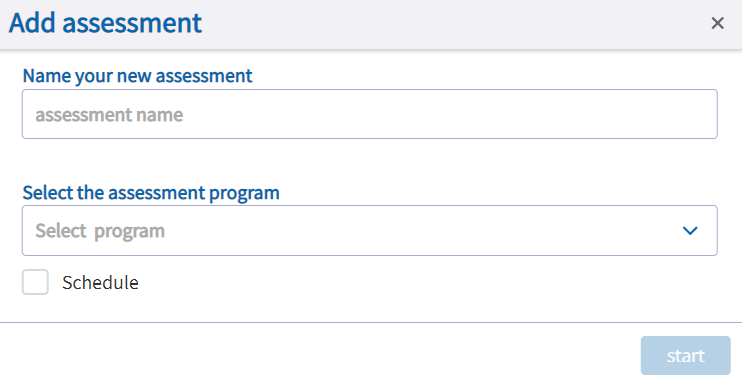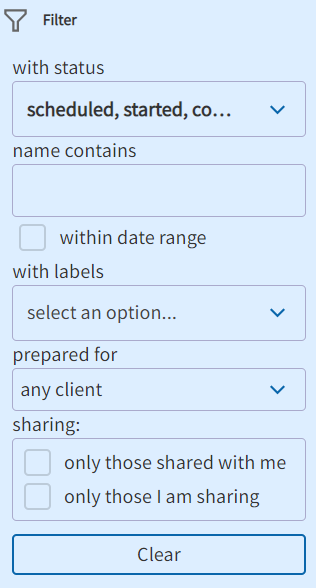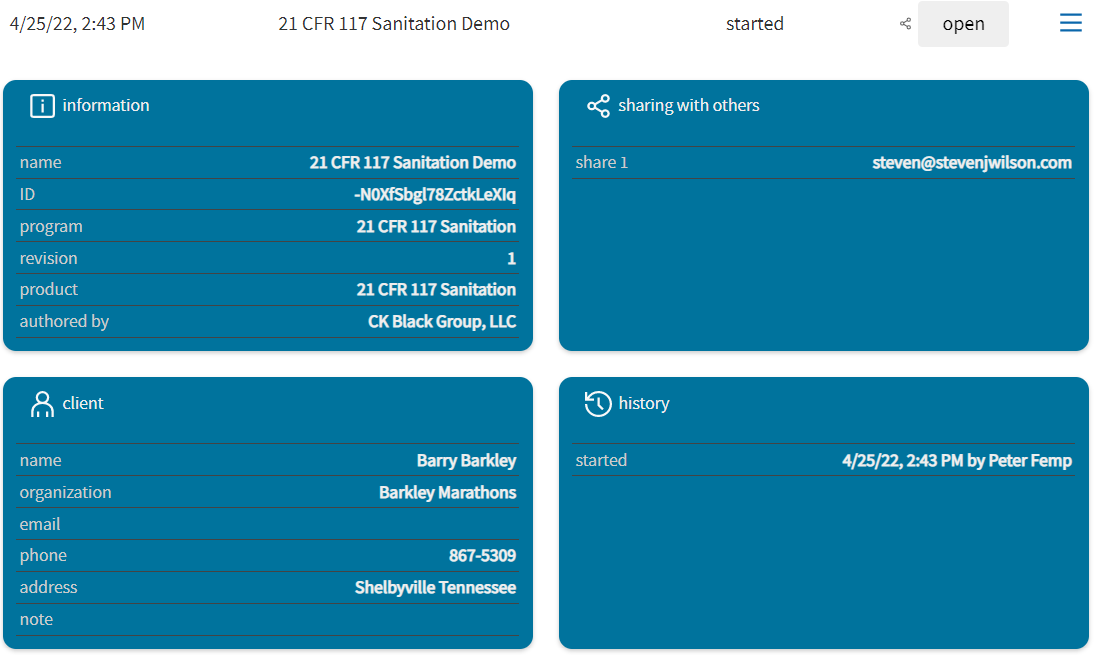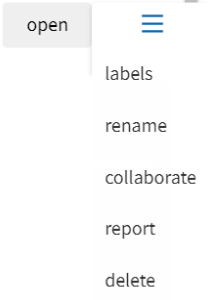Assessment Dashboard
Shown below are the different parts of the Assessment* dashboard. Use the table of contents above to jump to each number section or scroll down.
* The term Assessment refers to all types of GapCross applications. Originally, GapCross was designed for audits and assessments. You can use GapCross for other applications such as data collection, checklist, procedures, production record retention, and training application.

1 + Assessment
Click the + Assessment button to start or schedule a new assessment. Enter a name for the assessment and use the program drop-down to select the assessment program to use. Then click Start or optionally check Schedule to select a future date and time for the assessment.
Tip: Use a meaningful name for the new assessment, such as the name of the company, facility, department, location, or product being assessed. Recurring assessments names can use the year and quarter such as 2021 Q4. Having a standard naming scheme help you manage and sort your assessments and assessment records.
An "assessment program" is like a form that has not been filled out. When you create a new assessment a document is created based on the assessment program selected. Programs can be acquired in three ways:
- From the GapCross Marketplace dashboard
- Self-created using the authoring tools available from the marketplace
- Use our service to transform your checklist and requirements into a professional efficient assessment program

2 Assessment Filter
The assessment filters show or hide assessments by selecting one or more criteria as follows:
- The status of the assessment such as scheduled, started, completed and trash;
- Words or characters in the name of the assessment;
- A date range of the scheduled date;
- Labels associated with the assessment;
- Which client the assessment is for; and
- Shared assessments.
3 Clear Filter
When a filter is set, the Clear button will appear to clear the filter. If you think some of your assessment are missing check to see if a filter needs to be cleared.

4 Sortable Header
Click on a column header to sort or reverse the sort order.

5 Assessment Details
Click on an assessment to display the assessment detail information and the actions menu.

6 Sharing Icons
There is an icon for assessments you have shared, and assessments that someone else shared with you.
The shared with others icon

The shared with you icon

7 Assessment Menu Options
Click the Open action button or the drop-down menu icon to initiate actions. The following table shows which menu options apply to each status category.
| sheduled | started | completed | trash | |
| open | X | X | X | |
| labels | X | X | X | |
| rename | X | X | X | |
| collaborate* | X | X | X | |
| report | X | X | ||
| record | X | |||
| delete | X | X | X | |
| restore | X | |||
| * Available with the Pro plan. Call for more infomation | ||||
Note: Some shared assessments actions are only be available to the assessment owner.
Open. Open the assessment or procedure document.
Labels. Add labels to use for filtering the assessments. Examples: demo, 2020 Q1, Engr. Dept. Labels act like folders. Tag several assessments with a label and then use the filter to see just those assessments.
Rename. Changes the name of the assessment.
Collaborate. Shares an assessment with another user. There are three shared access modes:
- edit - grants full access to modify the assessment.
- leave-comments - grants access to add comments, reply to observations, and add image and document attachments. Does not allow changing assessment answers or observations.
- read-only - grants view only access.
Report. Produces an on-screen report of the assessment that can be interactively manipulated and exported as a PDF file. THe PDF will open in a new tab and then it can be downloaded and saved locally.
Record. Permanently secures a completed assessment as a permanent record. These "records" appear on the Records dashboard rather than the Assessment dashboard. All questions must be answered, all shares must be revoked, and all to-do items checked off to save the assessment as a permanent record.
Delete. Changes the status to "trash." Use the "trash" filter checkbox to see items in the trash.
Restore. Restores a deleted assessment to its previous status.
